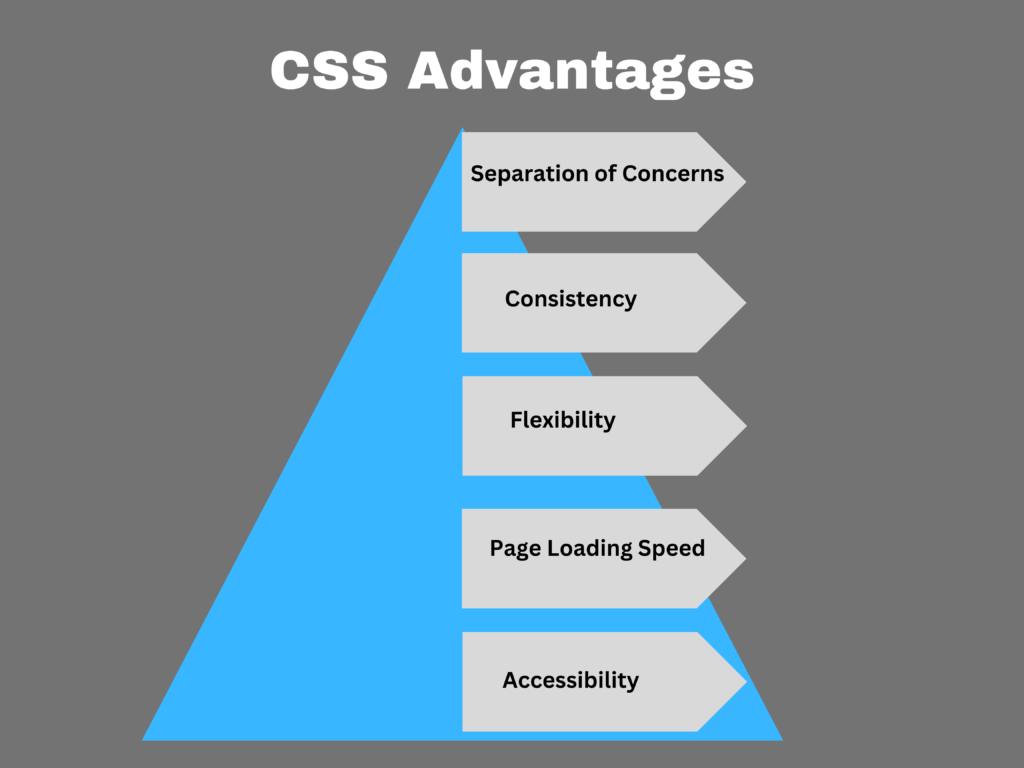Table of Contents
ToggleAdvantages and Disadvantages of CSS
CSS stands for Cascading Style Sheets, a technique sheet language that gives web designers control over how a website interacts with web browsers, including how their HTML documents are formatted and displayed.
Cascading sheets, or CSS, are a type of text-based scripting language that describes how websites are formatted and interact with web browsers. Web developers can control style elements and functionality such as layout, color, and typefaces, which in turn controls how HTML documents are formatted and displayed.
As a method sheet language, the primary objective was to distinguish between the content of the document and its presentation, which includes style aspects like color, layout, and fonts. An internet page’s look and feel are managed using CSS. You can use CSS to adjust the text’s color, font style, paragraph spacing, column size and arrangement, and other design elements.
The way that the HTML is displayed on the user’s end of the website is specified by CSS. Let’s review the advantages and disadvantages of CSS.

Advantages of CSS:

1. Separation of Concerns: CSS allows for the separation of content (HTML) and presentation (CSS), making it easier to maintain and update the design of a website without altering its underlying structure.
2. Consistency: By applying CSS styles across multiple pages or elements, developers can ensure consistency in the visual appearance of a website, enhancing user experience and branding.
3. Flexibility: CSS offers a wide range of styling options, including layout control, typography, colors, and animations, providing developers with the flexibility to create diverse and visually appealing designs.
4. Page Loading Speed: External CSS files can be cached by browsers, resulting in faster page loading times for subsequent visits to a website, which improves overall performance and user satisfaction.
5. Accessibility: CSS supports responsive design techniques, enabling websites to adapt to different screen sizes and devices, thus enhancing accessibility for users across various platforms.
Disadvantages of CSS:

1. Browser Compatibility: Different web browsers may interpret CSS rules differently, leading to inconsistencies in the visual presentation of websites across browsers. Developers often need to apply browser-specific CSS hacks or workarounds to ensure compatibility.
2. Learning Curve: CSS can have a steep learning curve for beginners, especially when dealing with complex layout techniques or browser quirks. It requires a solid understanding of selectors, properties, and cascading principles.
3. Specificity and Cascading: CSS follows specific rules of specificity and cascading, which can sometimes lead to unexpected results or conflicts when multiple stylesheets or selectors are applied to the same element.
4. Maintenance Challenges: Large-scale CSS files or projects with multiple developers may become challenging to maintain over time, especially when changes need to be made across numerous stylesheets or components.
5. Performance Impact: Overly complex CSS styles or excessive use of CSS features such as animations and transitions can impact website performance, causing slower rendering times or increased memory usage on client devices.
Conclusion:
In conclusion, CSS (Cascading Style Sheets) is a powerful tool that revolutionized web design by providing developers with the ability to separate content from presentation, leading to more maintainable and visually appealing websites. Its advantages, such as the ability to ensure consistency, flexibility in design, and improved page loading speed, have made it an indispensable part of modern web development.
However, CSS also comes with its share of challenges, including browser compatibility issues, a steep learning curve for beginners, and maintenance complexities in large-scale projects. These disadvantages can pose hurdles for developers but can be overcome with proper knowledge, best practices, and tools.
Ultimately, understanding the advantages and disadvantages of CSS is crucial for web developers to make informed decisions, optimize their coding practices, and leverage CSS effectively to create engaging and accessible web experiences. Despite its limitations, CSS remains a cornerstone of web design and will continue to evolve alongside advancements in technology and user expectations.
Read Also: Learn the fundamental of JavaScript Programming







